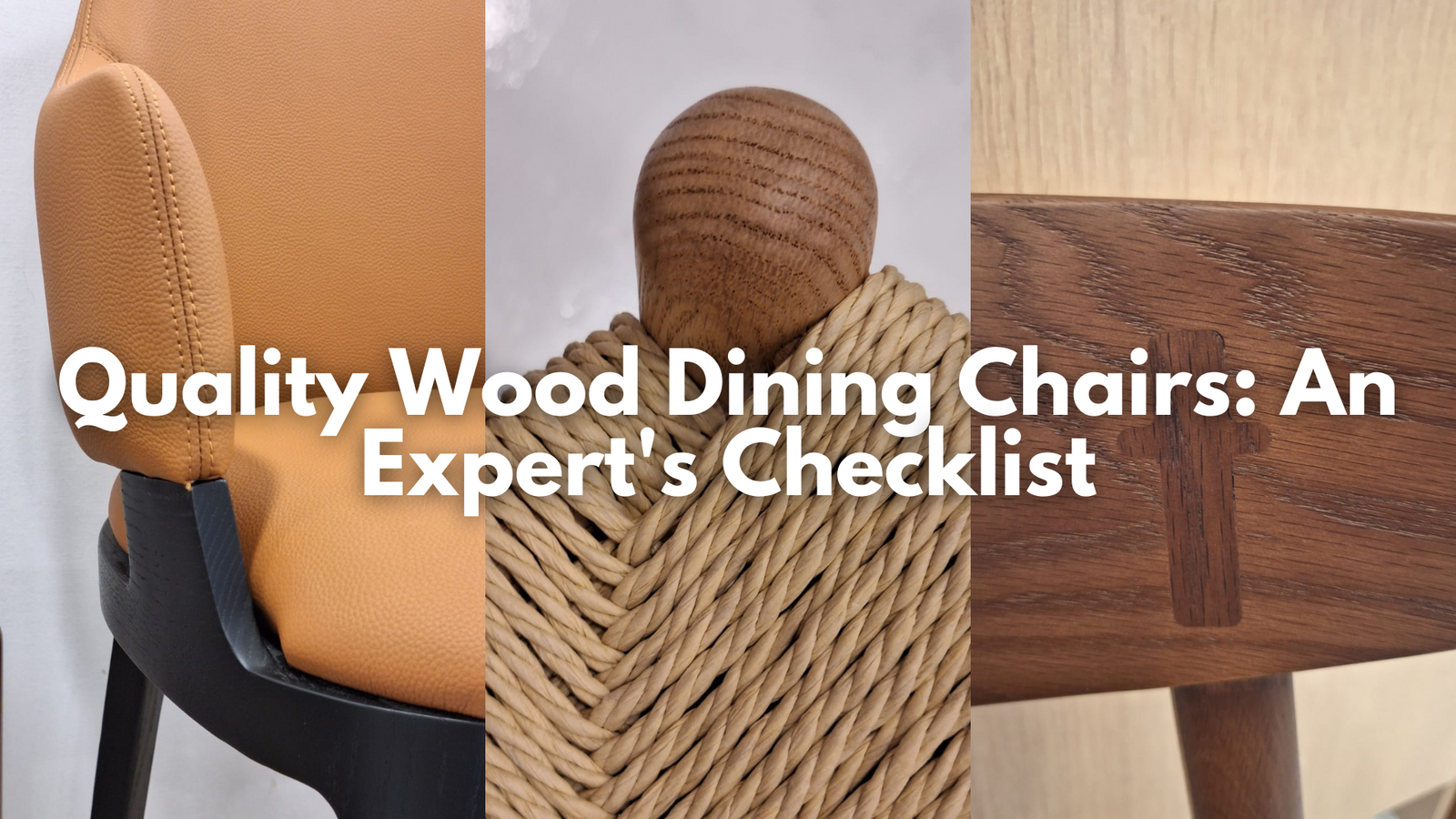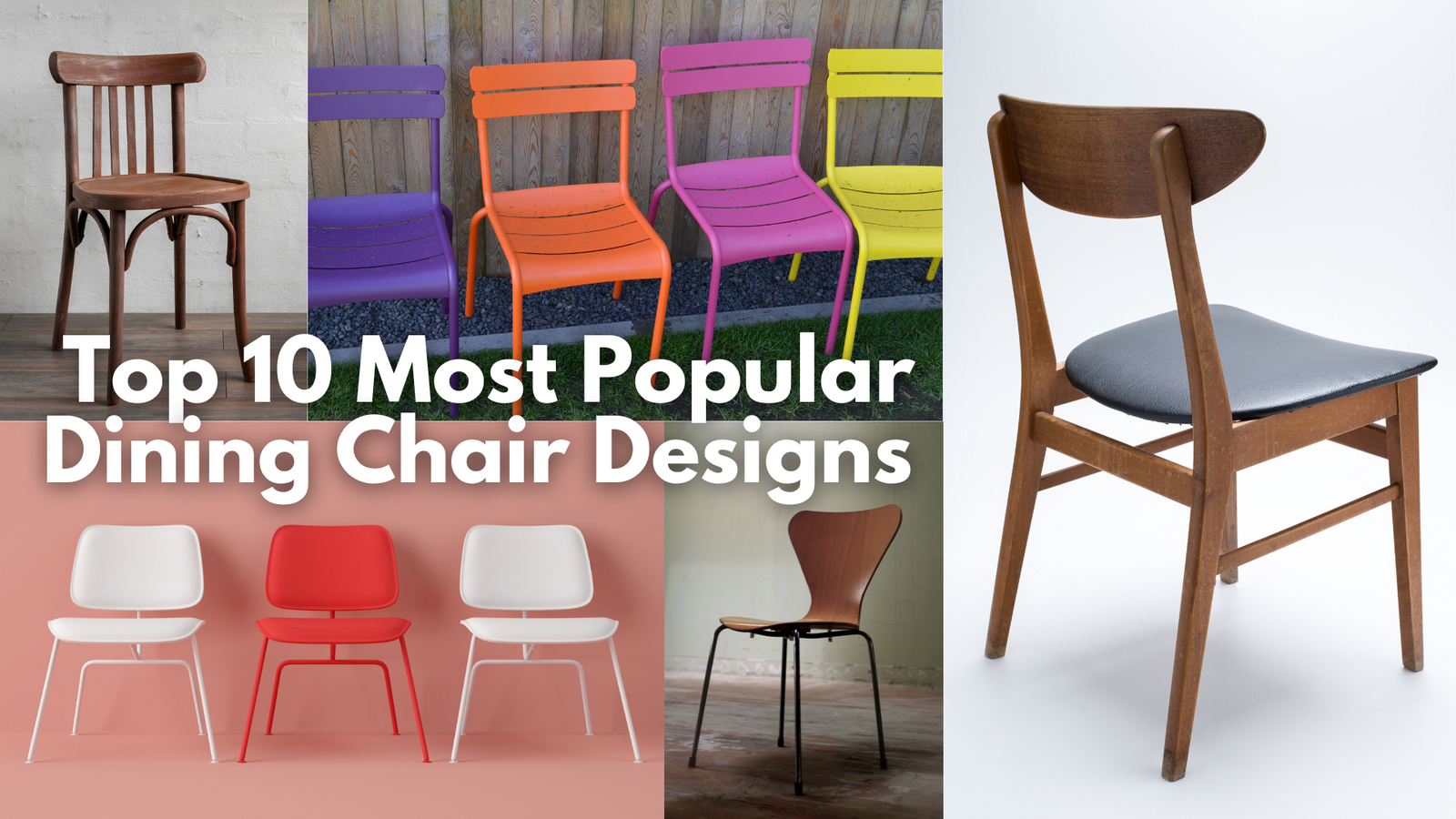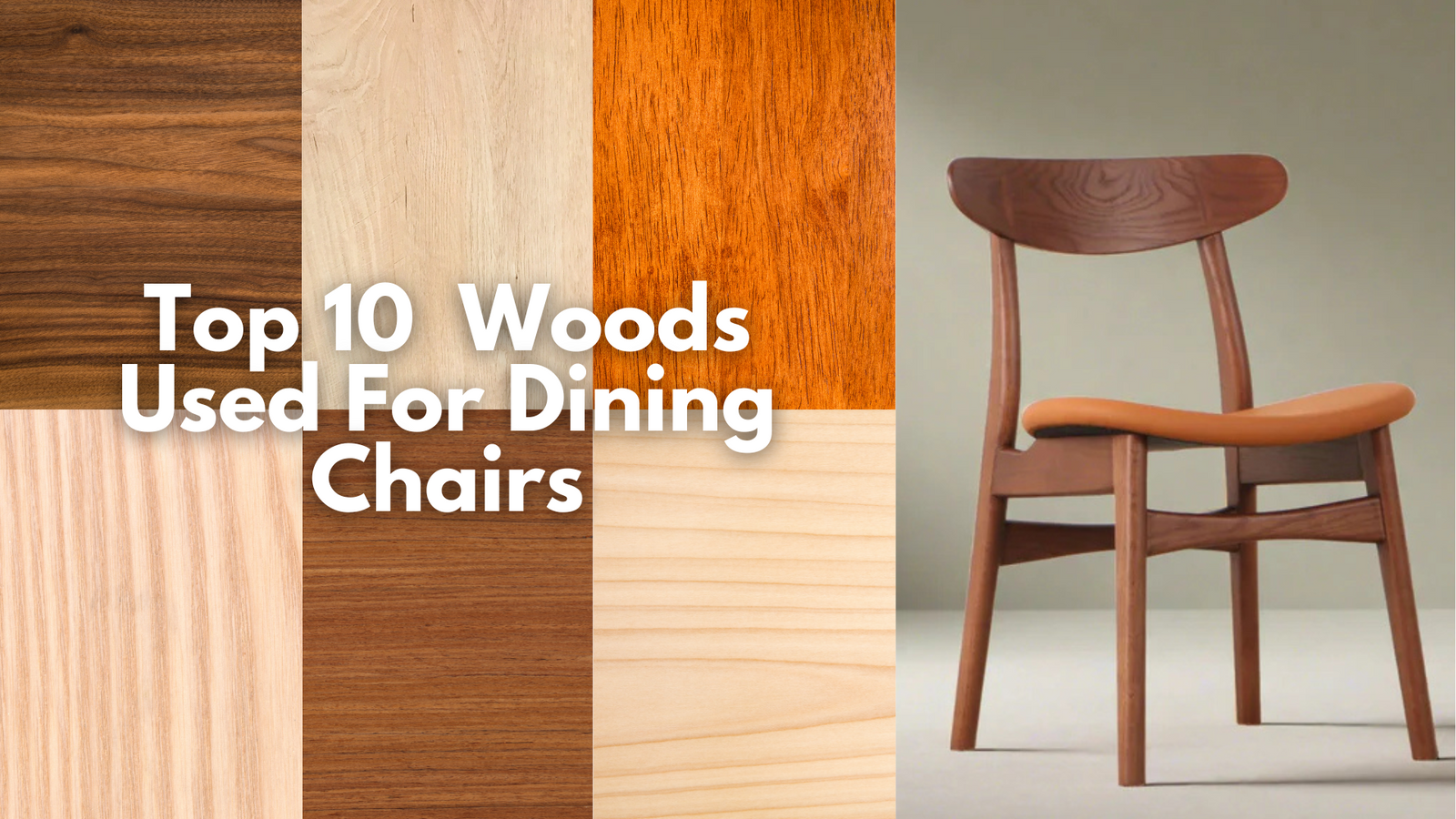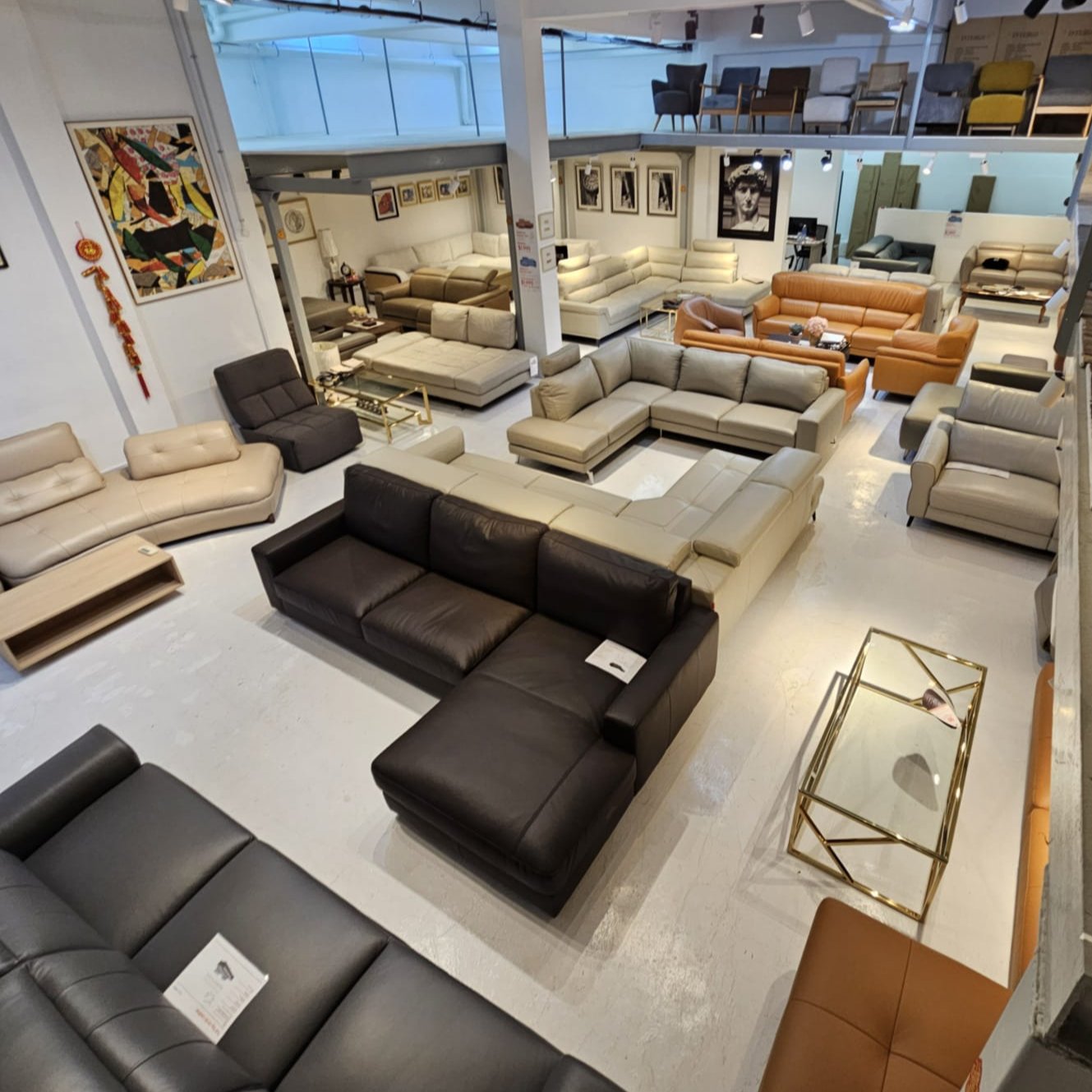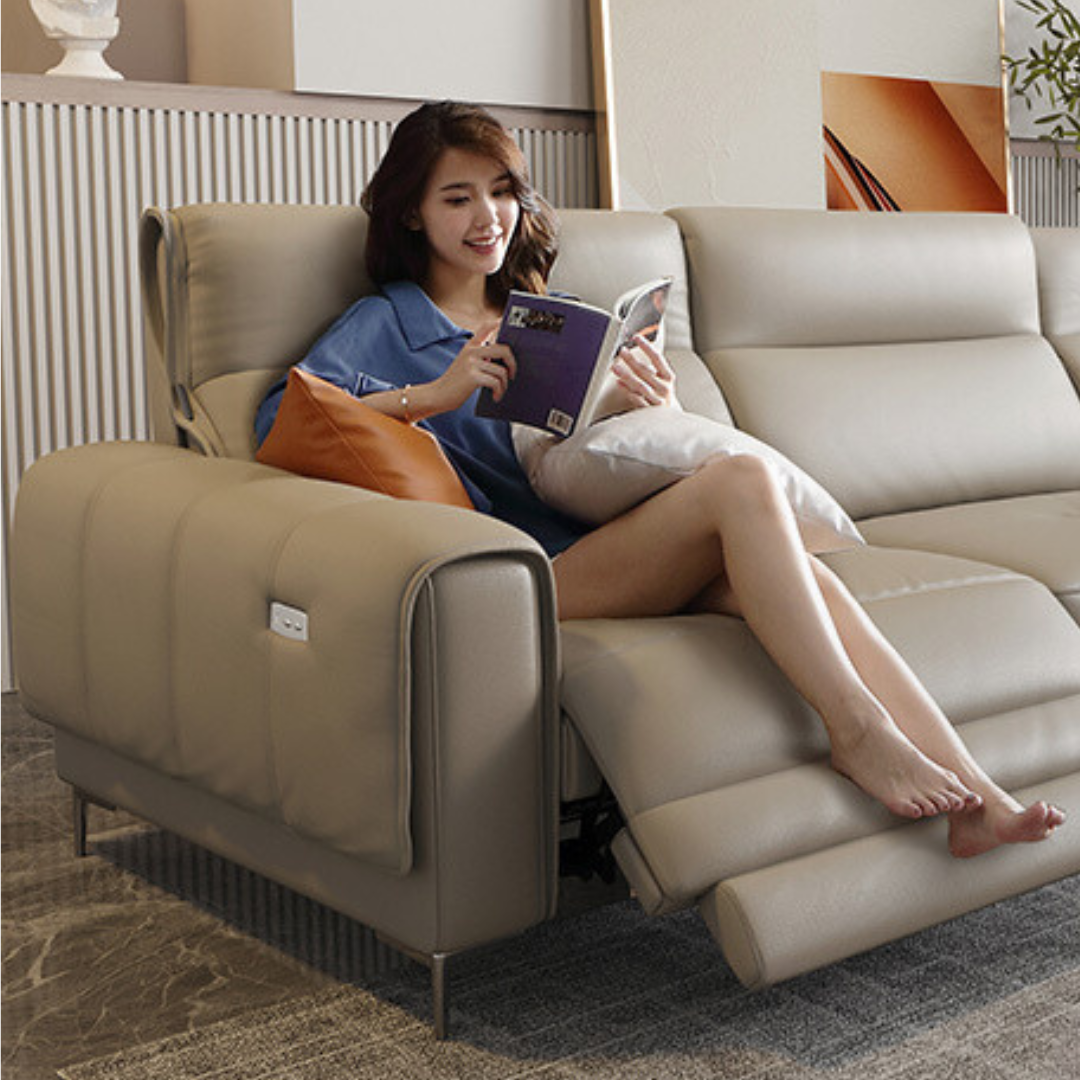A seasoned dining chair expert knows that the true craftsmanship and quality of a chair is revealed underneath. Flipping a chair over offers valuable insights into the manufacturer’s attention to detail. Here’s what to look for when evaluating the quality of a chair:
-
Neatly Finished Upholstery:
Examine the underside to ensure the upholstery is finished neatly. High-quality chairs will not have loose or haphazard cloth pieces sticking out, indicating careful craftsmanship. -
Smooth, Fully Finished Surfaces:
Check the wood surfaces. A well-made chair will have polished, splinter-free edges, and a consistent finish or lacquer applied across all visible and hidden areas. -
Properly Constructed Joints:
The strength of a chair lies in its joints. Inspect the construction and joinery for signs of high-quality craftsmanship, and note the use of durable hardware. In steel chairs, pay attention to welded joints for precision and smooth finishes. -
Assessing the Weight:
While flipping the chair you feel the chair's weight. A chair’s weight can reflect its construction quality. While the design influences weight, heavier chairs often indicate robust materials and solid build quality. -
Securely Attached Stretchers:
Stretchers, the horizontal supports between the legs, provide stability. Ensure these are properly joined to the legs, as any looseness may indicate weak structural integrity. -
Inspecting the Seat Base Material:
Flip the chair over to check the base material used for the seat. The choice of material influences comfort and durability, so it’s essential to assess this aspect thoroughly.
Expectations Versus Price
While a meticulous inspection can reveal the quality, it’s essential to maintain realistic expectations. High-quality chairs often come with higher prices, so understanding the relationship between cost and craftsmanship is key. So when an expert inspects a dining chair he takes note of the following ten points. These points will help him assess the quality level you are comfortable with versus its price.
Custom Solid Wood Dining Chair with Woven Paper Cord Seat- Sling Chair (CH7251AH)
#1. Dining Chair Experts Always Check the Type of Wood Used
High-quality dining chairs are made from durable hardwoods such as oak, walnut, maple, or teak, which resist wear and last for years. Avoid chairs made from particle board or veneers if you want durability. Some bent mid century plywood chairs are also very strong. Buy these from a reputable store. Cheaper solid wood chairs use rubberwood or popularly known as Malaysian oak or Hevea wood. Being sourced from Malaysia makes them cheaper to produce. There is minimal transport of materials to Singapore.
Oak is by far one of the best for durability. It is harder than hevea, walnut and pine. Its dense grain structure provides superior hardness, making it more resilient to wear and tear compared to other woods like walnut or hevea. This strength ensures oak chairs maintain their shape and stability over time, even with heavy use. Oak also offers natural resistance to moisture and pests, enhancing its longevity and suitability for both indoor and outdoor furniture. Additionally, oak’s aesthetic flexibility allows it to be stained in a range of finishes, from light natural tones to darker walnut or grey shades, matching various interior styles. Its smooth texture ensures comfort, while its weight adds a sense of quality and solidity.
#2. Look for Solid Construction and Joints In Quality Dining Chairs
Quality wood dining chairs are assembled with strong joinery, such as dovetail, mortise-and-tenon, or dowel joints. These methods ensure stability, unlike staples or nails that compromise structural integrity. These apply only to fully set up chairs. Flat pack chairs are only as strong as its bolt and nut joints. Such chairs need to be tightened every so often. Dining chair experts always prefer fully setup chairs.
If you can afford it, always buy a fully setup chair, as it offers superior durability, stability, and craftsmanship compared to flat-pack alternatives. Fully assembled chairs are constructed by professionals using precise tools and techniques, ensuring tight joints and proper alignment, which reduces the risk of wobbling or loosening over time. They also tend to use higher quality materials and finishes, making them more resistant to wear and tear. In contrast, flat-pack chairs often rely on weaker joinery and may degrade faster with repeated use, especially if not assembled perfectly.
#3. Inspect the Chair’s Weight
A heavier chair often indicates denser wood and solid construction, while overly light chairs might use cheaper, weaker materials. This is a general rule than cannot be followed too closely all the time. Heavy chairs can scratch your floor and can be hard to move around. Light chairs are easier to manage.
#4 Evaluating the Quality Of The Finish By A Dining Chair Expert
Custom Solid Wood Dining Chair - Peech Chair (CH15042)
Examine the surface finish for smoothness and evenness. A quality finish protects the wood and enhances its natural beauty, with no rough spots, bubbles, or inconsistent staining. Wood eyes and too many finger joints can indicate weak points.
There are several types of finishes for chairs, with the most popular being PU (Polyurethane), AC (Acid-Cured), and NC (Nitrocellulose). Better chairs typically feature a PU finish, as it offers superior durability and resistance to wear, moisture, and heat. PU finishes create a hard, protective layer that extends the chair's lifespan, making it ideal for high-use environments. AC finishes are also durable and chemical-resistant but can be more brittle over time. NC finishes, while easy to apply and repair, provide less protection and are more prone to scratches and fading. PU finishes strike the perfect balance between aesthetics and functionality, offering a smooth, polished look that lasts longer with minimal maintenance, making them the preferred choice for high-quality furniture.
#5. Dining Chair Expert Stability Checklist
When seated, the chair should not wobble or shift. This indicates a well-balanced design with properly aligned joints. Other less obvious points to look out for are as follows:
-
No Overhang on the Front Edge of the Seat:
The front edge of the seat aligns with the front legs to prevent tipping, especially when weight is placed on the front, such as a child standing on it. -
Extended Back Legs for Stability:
Chairs with back legs that extend further back reduce the chances of tipping backward during use. -
Backward Slant in Designer Chairs:
Designer chairs often feature slightly slanted back legs to discourage users from tilting and balancing on just the two back legs. -
Glued Joints for Added Stiffness:
High-quality chairs have glued joints, which strengthen the structure and prevent the most common failure point—joint loosening over time. -
Slight Outward Slant of Chair Legs:
Chair legs slanted slightly outward distribute weight more evenly, enhance stability, and reduce stress on joints, prolonging the chair’s durability.
#6. Quality Dining Chairs Means Comfort and Good Ergonomics
High-quality chairs offer a comfortable sitting experience. But really comfortable chairs are challenging to design, and the most reliable way to assess comfort is by visiting a showroom and testing the chair in person. Dining chair experts will never purchase chairs online because they know that without trying them can be risky. Here are key design elements that contribute to chair comfort:
-
Cushioned Seats with D25 or D30 Foam Density:
These foam densities provide optimal support, allowing you to sit comfortably for extended periods. -
Slanted Curved Back:
A curved back enhances comfort, but the angle must be precise to prevent the back edge from causing discomfort. -
Slightly Sloped Seat:
A backward-sloping seat supports better posture ergonomically and prevents slouching individuals from slipping off. -
Mid-Century Rounded Back Design:
Some mid-century designs feature rounded backs that allow users to rest their elbows, offering a practical alternative to dining chairs with arms. -
Psychological Comfort from Stiff Chairs:
Surprisingly, stiff chairs can provide psychological comfort by offering a sense of stability and support.
Custom Solid Wood Dining Chair - Quintus Chair (CH9517)
#7. Dining Chair Experts Always Check Wood Grain Patterns
Natural wood grain gives each chair a unique look. Uniform patterns with minimal imperfections indicate attention to material selection and craftsmanship. Lower quality wood can be identified by examining the wood patterns and structural components closely. Here are some signs to watch for:
-
Finger Joint Patterns on Legs and Components:
Finger joints, visible as interlocking patterns, indicate that smaller pieces of wood were joined together. These joints can weaken the structure and become potential breaking points over time. -
Presence of "Eyes" on Chair Legs:
Eyes, also known as knots or small irregularities, are weak spots in the wood. Legs with visible eyes may fail under stress, compromising the chair's durability. -
Use of Long Stretchers or Fillers:
Stretchers that appear uneven or filled could indicate underlying cracks or splits that have been concealed. Dark wood finishes are often used to mask these imperfections, hiding both material flaws and subpar craftsmanship.
#8. Inspect the Upholstery - Dining Chair Expert's Checklist
Upholstered wooden chairs are becoming increasingly popular due to the enhanced comfort they provide. If the chair has an upholstered seat, ensure the fabric or leather is neatly stitched, durable, and tightly fitted without sagging or fraying. However, the two most important factors to consider are:
-
Upholstery Material:
Not all materials wear equally over time. While PU or faux leather covers may be budget-friendly, some of these materials can crack or peel with frequent use. Opting for higher-quality fabrics or premium faux leather ensures better longevity and appearance retention. -
Foam Quality:
The type and density of foam significantly impact comfort and durability. High-density foam, such as D25 or D30, provides better support and retains its shape longer, while lower-density foam may flatten quickly, reducing comfort over time. Investing in good foam ensures the chair remains comfortable and inviting, even with prolonged use.
#9. Review Warranty and Brand Reputation
With the rise of "Taobao shops," it’s increasingly difficult to know the quality of the products you are purchasing. Many of these shops operate as dropshippers, reselling products online without ever inspecting them firsthand. While they often offer fast shipping by focusing on ready stock from Chinese suppliers, less than 50% of customers report satisfaction with their purchases from these types of stores. To ensure you get reliable furniture, look for the following:
-
More than 10 Years in Business:
A shop with a decade or more of experience has likely passed the test of time and fulfilled warranty obligations, reflecting reliability. -
Over a Thousand Google Reviews:
A large number of positive reviews suggests consistent customer satisfaction and helps you avoid fly-by-night sellers. -
Physical Showroom or Office:
Stores with a physical presence demonstrate accountability, unlike online-only sellers who may disappear overnight. -
Comprehensive Warranty of at Least 10 Years:
Shops that offer full warranties, instead of limited ones, show confidence in their products and provide peace of mind for long-term use.
#10. Look for Sustainability Qualities
For eco-conscious buyers, selecting chairs made from responsibly sourced wood helps reduce environmental impact. Below are examples of sustainable and non-sustainable woods to guide your choices:
Sustainable Woods
-
Oak:
Commonly used in high-quality furniture, oak is often sourced from responsibly managed forests. -
Ash:
Known for its strength and flexibility, ash can be sustainably harvested with proper forest management. -
Beech:
This wood regenerates quickly and is often used in eco-friendly furniture manufacturing. -
Teak (Plantation-Grown):
Plantation-grown teak ensures that natural teak forests are preserved. -
Bamboo:
A fast-growing, renewable resource that is highly sustainable when harvested responsibly. -
Acacia:
This hardwood is increasingly used in furniture and grows quickly, making it a sustainable option.
Non-Sustainable Woods
-
Mahogany (Non-Certified):
Often associated with deforestation, uncertified mahogany is not environmentally friendly. -
Rosewood:
Rosewood is overharvested and listed under CITES restrictions due to the rapid depletion of its natural sources. -
Teak (Wild-Harvested):
Wild-harvested teak contributes to deforestation and habitat loss. -
Ebony:
This wood is slow-growing and frequently harvested illegally, making it unsustainable. -
Merbau:
Heavy demand for Merbau has led to overharvesting, contributing to deforestation in Southeast Asia.
Choosing furniture made from sustainable wood or certified sources (such as FSC-certified wood) ensures that your purchase supports ethical forest management and helps preserve ecosystems.
Custom Solid Wood Dining Chair - Eon Arm Chair (CH6203)
Recommended Links
Top Dining Chair Questions
- Top 10 Best Dining Chairs To Buy For Singapore
- 10 Reasons Why Oak Is The Best Wood for Dining Chairs
- 10 Reasons Why Picket&Rail Solid Wood Designer Dining Chairs Are So High Quality
- What Are the Typical Dimensions of a Standard Dining Chair?
- What Are Some Space-Saving Dining Seating Options?
- Can I Mix and Match Dining Chairs with Different Styles?
- What Are Hans Wegner's Most Famous Dining Chair Designs?
- What Are the Advantages of Using Armchairs for Dining?
- What Are Bauhaus Design Dining Chairs?
- What Are Modern Classic Design Dining Chairs?
- What Are Some Popular Materials Used for Dining Chairs?
- What Are the Different Types of Dining Chairs Available?
Follow our facebook page for the latest deals.

